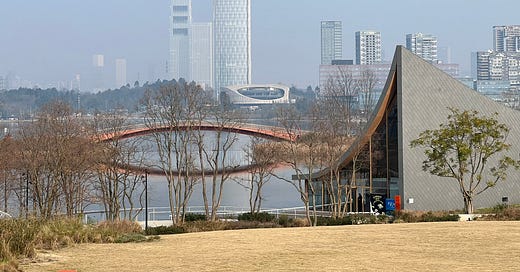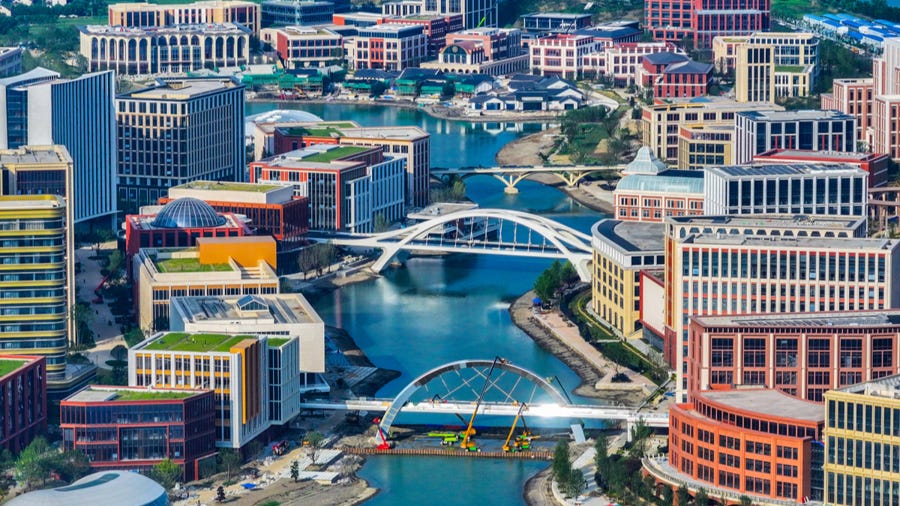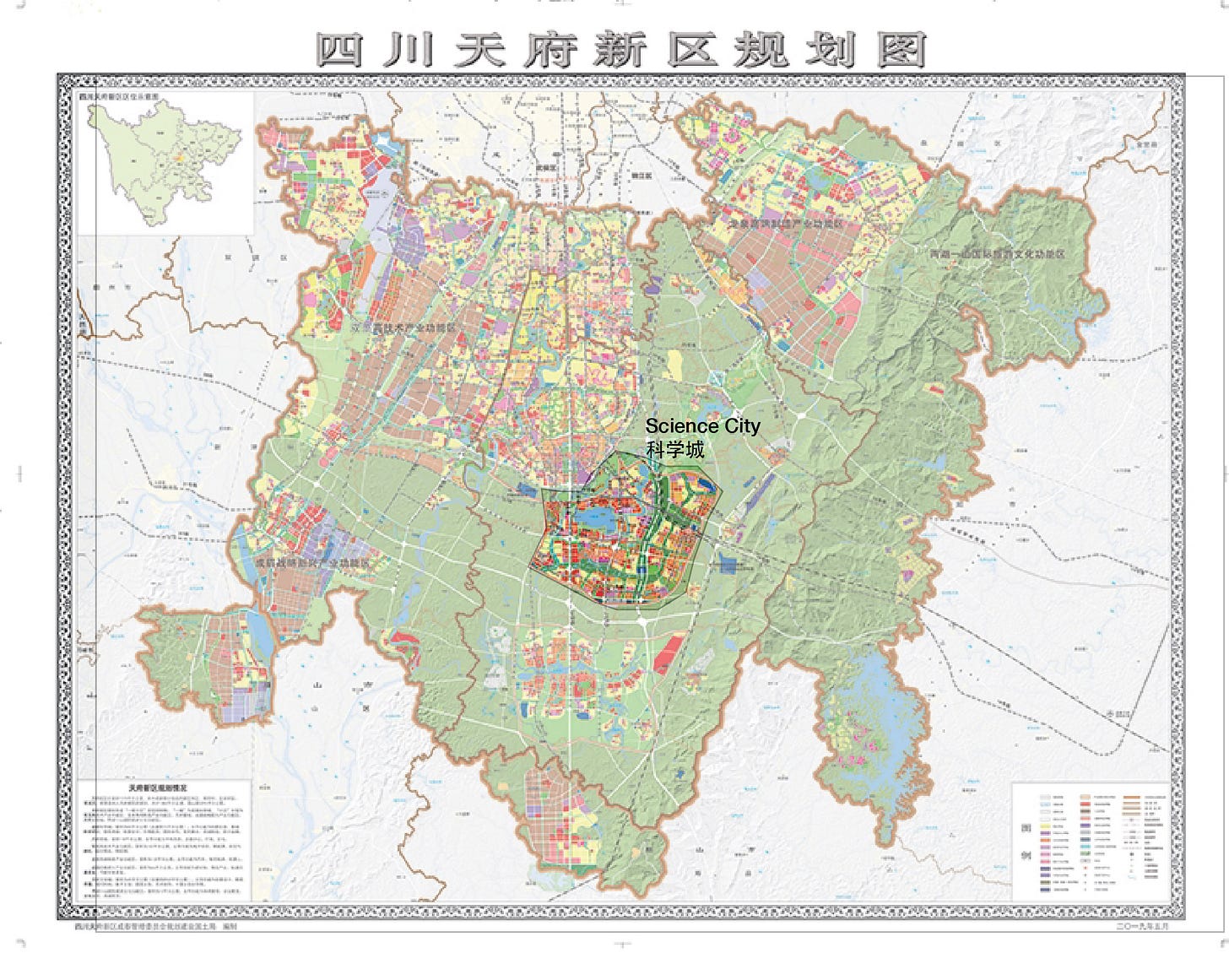China's state-centric innovation districts
Whereas previous new areas sought to attract private and foreign investment, today most of the new areas I will detail here are anchored by state-owned enterprises and national research institutes.
Whereas previous new areas sought to attract private and foreign investment, today most of the new areas I will detail here are anchored by state-owned enterprises and national research institutes.
Introduction
China’s urbanization and economic growth over the past several decades has been defined by the creation of special economic zones (SEZs), new districts, new areas, and other variations on the theme. Perhaps it is no surprise that even amidst a real estate downturn and general economic malaise gripping China at the moment, there are still a number of key infrastructure projects going forward. Among these are several new areas that are developing apace, defying the naysayers and almost every economist out there who has warned that there is little demand for more real estate and that China’s investment-centric model needs to change course. These “new type new areas” developed in the last few years are focused on innovation and scientific research, as well as on promoting “coordinated development” 协调区域发展 between neighboring jurisdictions. Whether there is actual innovation or “coordinated development’ happening in these places is another question, but that’s at least how they are being promoted.
In general, new areas under construction now are not dramatically different to new areas planned over the past few decades: large greenfield sites, laid out en masse on the edge of cities with overly wide avenues and out of scale buildings that aim to attract key industries and create new ‘growth poles’ of urban development in their cities and regions. But at a time where the Party-State is commanding a greater presence in China’s economy, unicorns have gone missing, and the urban middle class is not spending like they did before, the chief anchors of new area construction in recent years are different. Whereas previous new areas sought primarily to attract private and foreign investment, today most of the new areas I will detail here are anchored heavily by state-owned enterprises and national research institutes. Even as private capital may be hesitant to invest, state-owned institutions have been the first to move into many such zones.
Of course the “state” has always been involved in creation of special economic zones particularly after Shenzhen, and the following 19 national new areas. But over the last few years we see a pattern in which new industrial districts are no longer as focused on attracting foreign or domestic private investment but are a.) primarily anchored by central state institutions. These include state research institutes, data centers of major telecom operators, and new research bases for central state-owned enterprises and other elements of “State capital” more generally. Much of the residential real estate is also built by property arms of central SOEs (China Rail, China Communications), suggesting central SOEs are playing a bigger role investing in such state-prioritized projects.
China’s new areas have long been heavily supported by the local and national state, but the firms and tenants in emerging districts appears to have a distinctly state-owned character. This is not all that surprising, given the times, but it’s worth exploring a bit a few recent new districts under construction across China to get a feel for what industries and sectors have received central support amidst a trying economic slowdown, and how this takes shape in the urban (and suburban) environment. There are also some design features that can be seen across these districts:, b.) ecological elements are favored, such as “sponge city” design—permeable parks, lots of wetlands, and in general an emphasis on integrating buildings with nature—this is not a bad thing! Restrained architecture is favored over eye-catching starchitecture and there is a focus on spaces for reading (libraries, book stores, etc). Finally, from a governance perspective some (but not all) of the areas are coordinated efforts of neighboring jurisdictions to coordinate development across city regions and create city clusters.
Let’s hop on a whirlwind tour of some of China’s emerging new areas…
Xiong’an New Area 雄安新区
I won’t detail too much here on Xiong’an, since I’ve already written extensively on it for Sinocities here and here. While many people have already declared Xiong’an a failure or a ghost city, construction continues—primarily driven by state capital and the relocation of several large central enterprises. The city initially grew out of the 2015 Jing-Jin Ji plan for integrated development of Beijing, Tianjin, and Hebei. Only in 2017 was Xiong’an announced as a major pillar of the regional effort. As part of this, Beijing and Tianjin-based companies, investment funds, as well as a great deal of central government support have been coaxed to support Xiong’an’s development. Four branches of Beijing-based universities are also opening up satellite campuses in the area. After nearly eight years of development, there are many uncertainties facing the area, and skepticism over the merits of trying to develop such a city in a location with few natural advantages—essentially an entirely state-driven project. However, that’s exactly how to view Xiong’an—a state-driven effort to relocate SOEs to create a new cluster of state-led innovation in renewable energy, infrastructure, and other national-security critical tech, bolstered by several branches of Beijing universities—albeit crucially none of the nation’s top universities like Beida and Tsinghua.

Companies with Significant Investment
Huaneng 华能
Datang 大唐
China Telecom 中国电信
China Satellite Communications 中国星网
State Grid 国家电网 (see above)
China Communications Construction 中交集团
China Rail Construction 中铁建
Sinochem 中华
Power China 中国电建
China Energy Engineering Corporation 中国能建
Universities
Beijing Forestry University 北京林业大学
Beijing Geological University 北京地质大学
Beijing Technology University 北京科技大学
Beijing Jiaotong University 北京交通大学
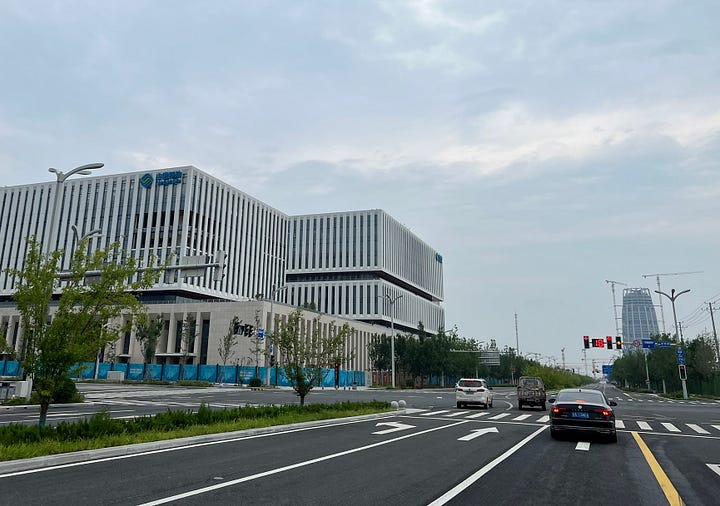
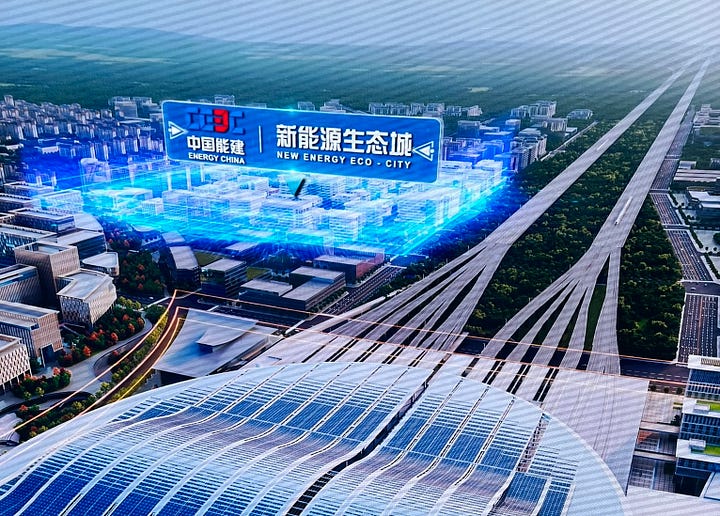
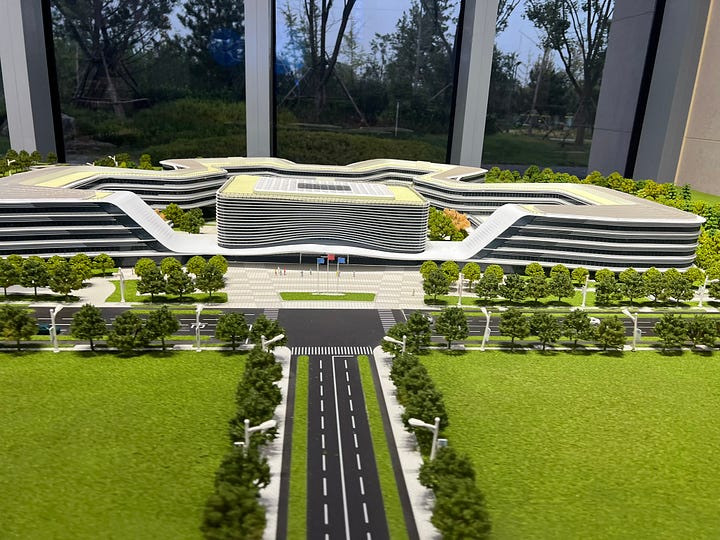
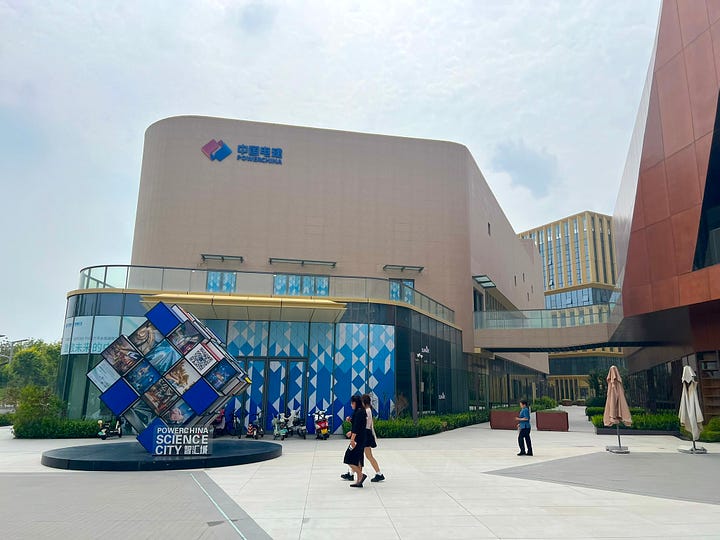
Yangtze River Integrated Development Model Zone 长江三角一体化模范区
Straddling three province-level jurisdictions of Zhejiang, Jiangsu, and Shanghai, the Yangtze River Coordinated Model Zone aims to develop the region lying at the interstices of three of China’s most developed regions. To see more details about this project, see this earlier post I did on the area. Key tenants include a large research campus of Huawei, a data-center cluster of the East-West Compute Plan. The development is an effort to promote cross-provincial coordination in planning, responding to top-down policies of “Integrated regional development” 协同区域发展promoted at least since 2014 when it was included in the National New Type Urbanization Plan. In the past, Shanghai and Suzhou have each developed with their own projects—Suzhou’s vast science/research areas, and Shanghai’s Pudong. This is the first real effort to coordinate growth between what are some of the most economically cities in China.
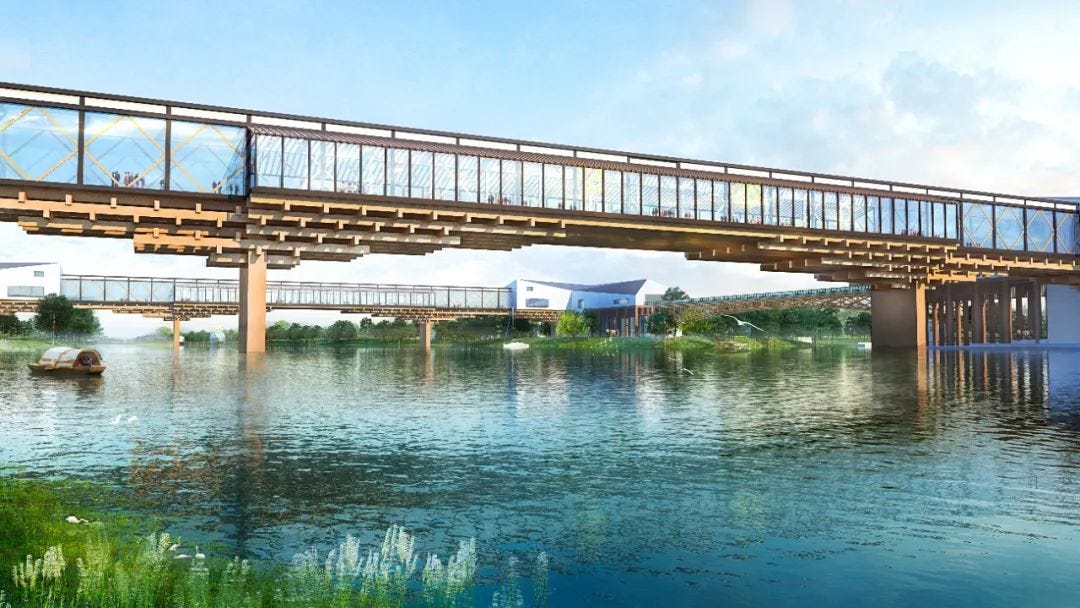
Chengdu Tianfu Science City 成都天府新区 (科学城)
Lying at the southernmost terminus of Chengdu’s Metro Line 1. which runs North to South through the center of the city, Science City (科学城) is the newest area under development in the sprawling Tianfu New Area, which was inaugurated back in 2011. Already completed are branches of the China Academy of Sciences, a National Cloud Supercomputing Center, a research institute of the Sichuan-Tibet Railway, and office parks developed by China Communications 中交集团 and Power China 电建.
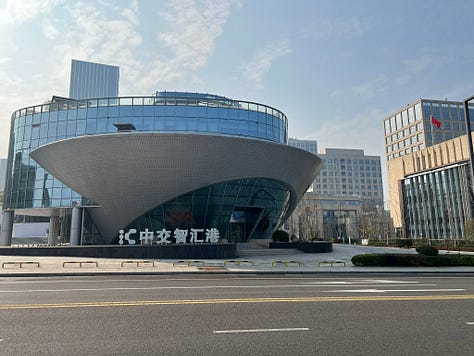
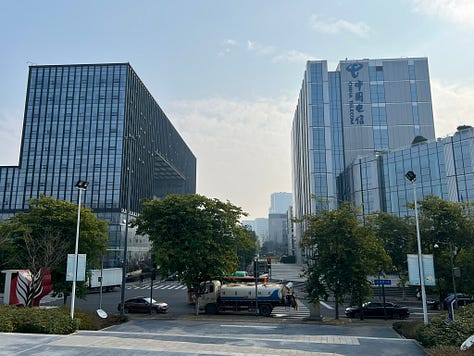
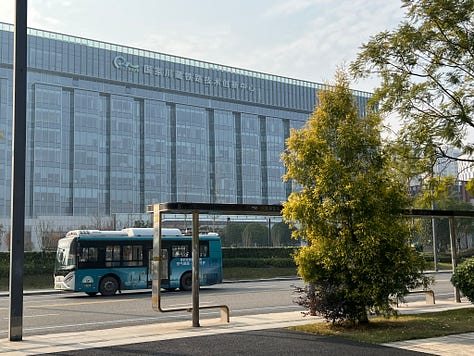
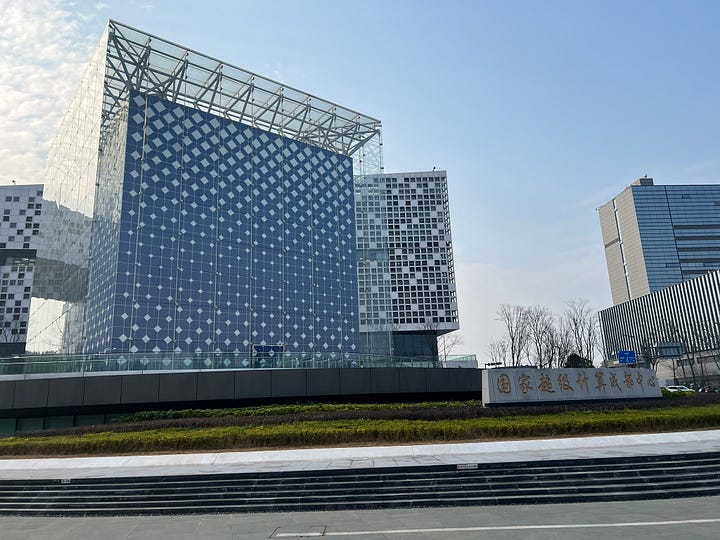
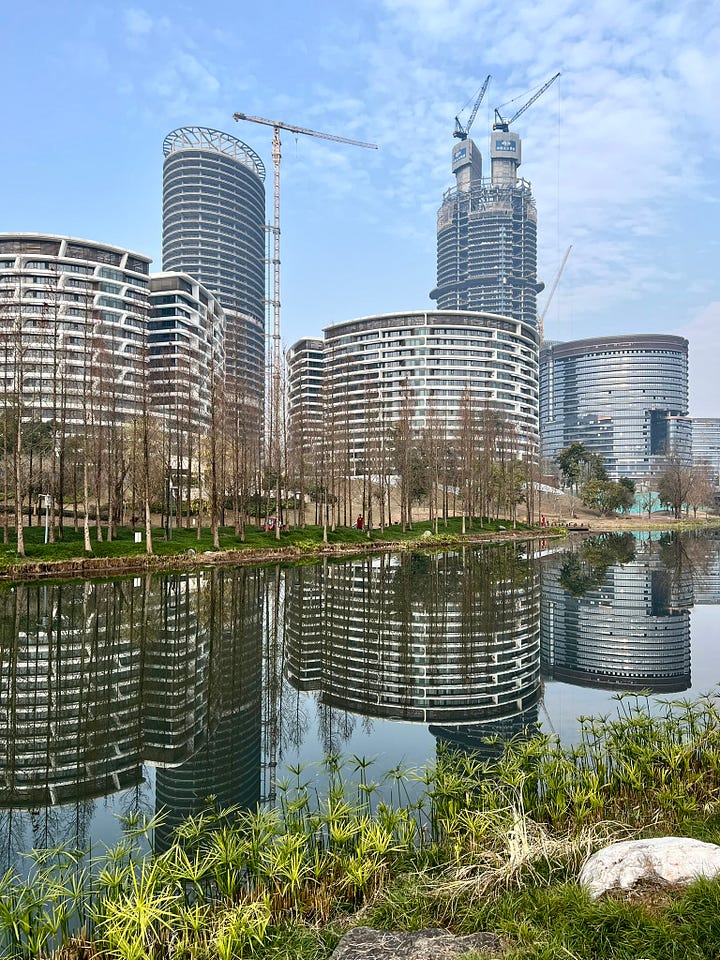
other tenants in Tianfu Science City :
Southwest Geological Technology Innovation Center西南地质科技创新中心
China State Construction Engineering Green Building Engineering Research Center中国建筑绿色建造工程研究中心
Tianfu Digital Smart Industrial Park 天府数智产业园
China Academy of Sciences Chengdu branch 中国科学院成都分院
China Academy of Sciences Biological Research Chengdu 中国科学院成都生物研究所
卫星通导及系统融合产业园 (CCDI悉地国际受邀为国家级高新技术企业(成都盟升电子集团))
Chengdu Western Electric Network Safety Research Institute成都西电网络安全研究院
Power China 中国电建金结研发中心
Tsinghua Sichuan Energy Internet Research Industry Ctr清华四川能源互联网研究院产业生态中心
Xi’an Xixian New Area 西咸新区
Xi’an is the rapidly growing Western metropolis and capital of Sha’anxi Province. The neighboring city of Xianyang, the location of the ancient capital city of the Qin Dynasty, has lagged behind Xi’an in development. The new Xixian New Area was made a national-level new area in 2014 and straddles both cities, thus facilitating the creation of a Greater Xi’an Metropolitan area. There are several sub-areas within the sprawling 882 sq km area, including an airport-related development around Xi’an-Xianyang Airport; Qin-Han New City—a real estate development located near the old Qin and Han imperial city site—and also the site of a new Sha’anxi History Museum Qin and Han Pavillion. The Western Cloud Valley 西部云谷 contains cloud computing centers and other tech and innovation-focused companies. On a visit in August of 2024, the area was fairly quiet and did not appear to be particularly well occupied. But some sections of the area were already built out and partially occupied.
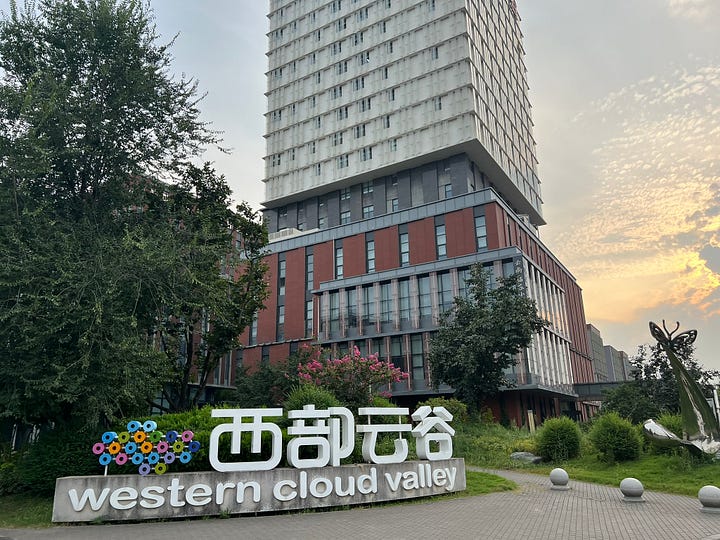
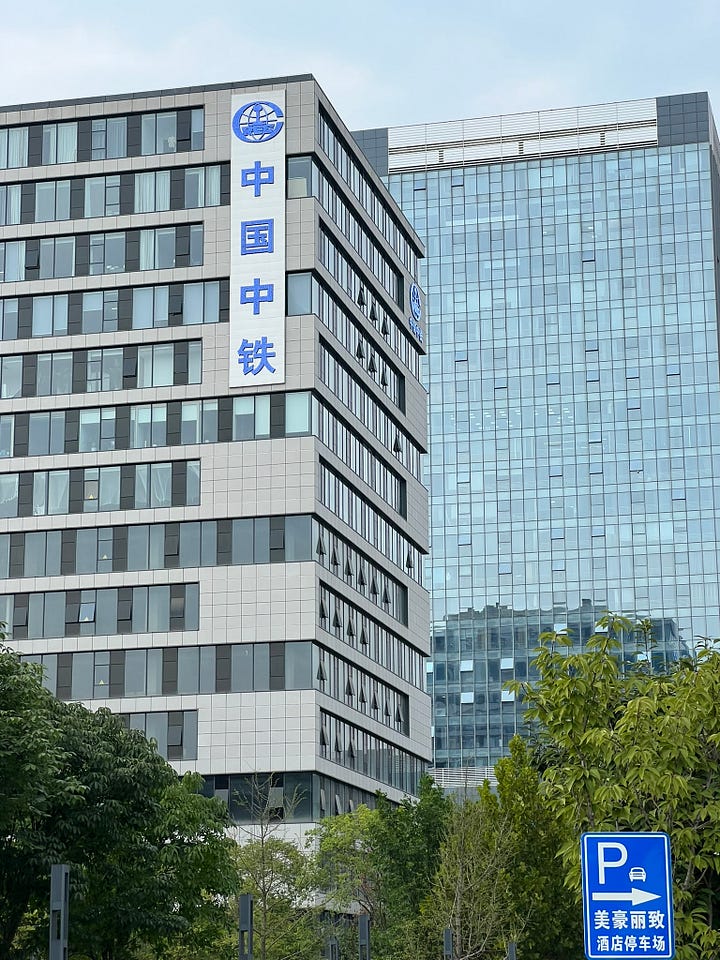
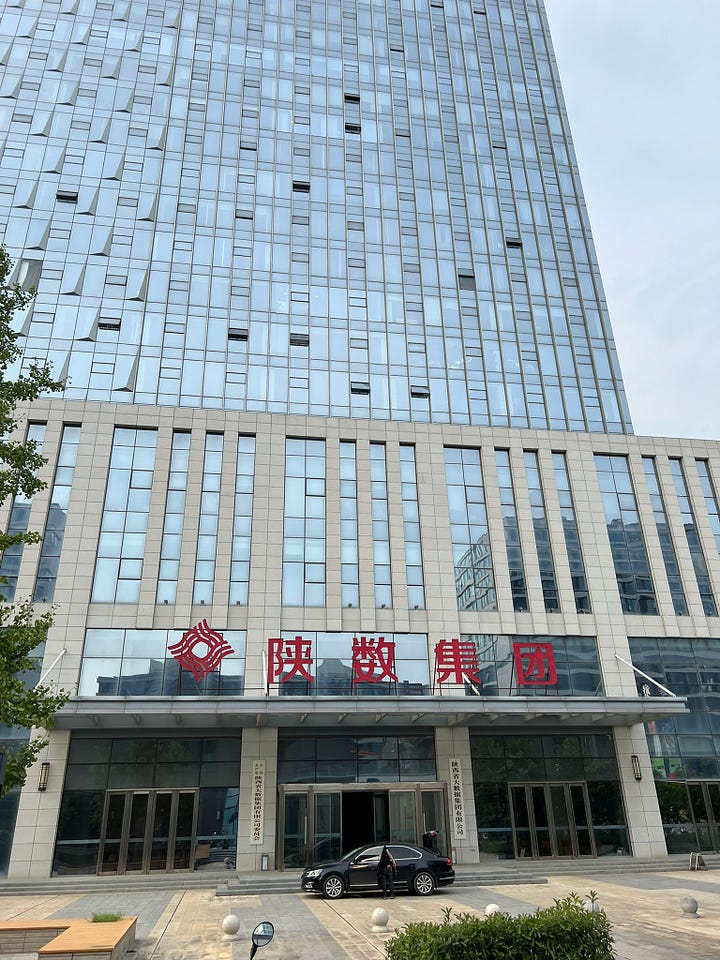
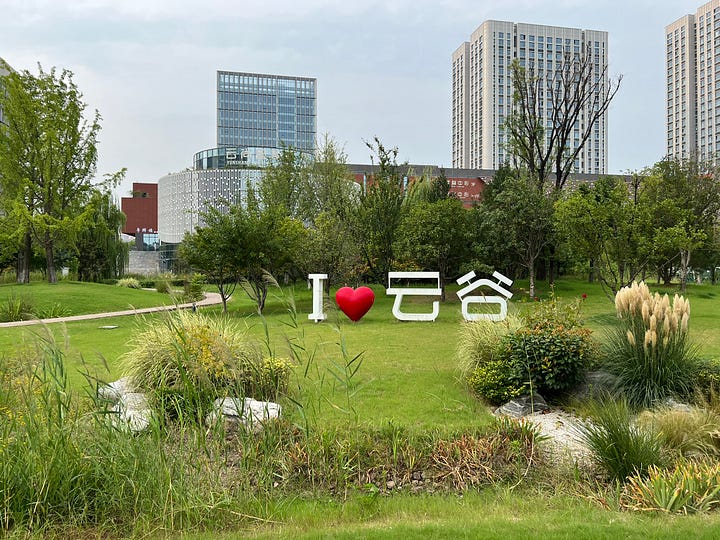
China Telecom Data Center 中国电信
China Unicom Data Center 中国联通
China Mobile Data Center 中国移动
Shanxi Data Group 陕数集团
China Railway Construction NW China HQ 中铁建工西北总部


